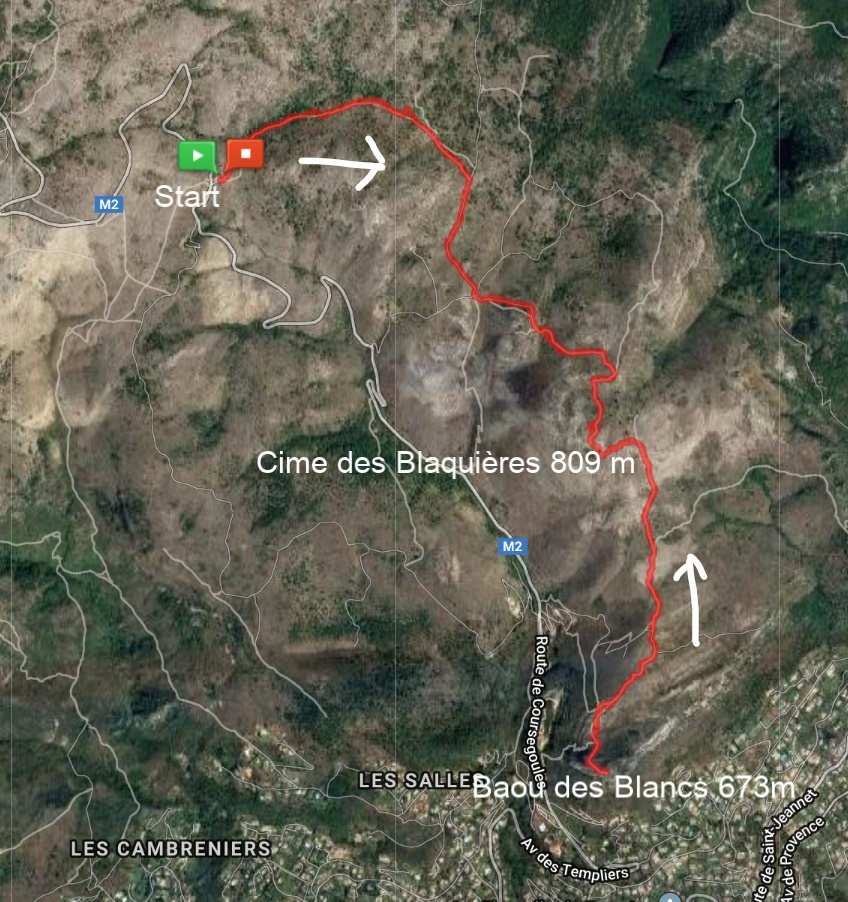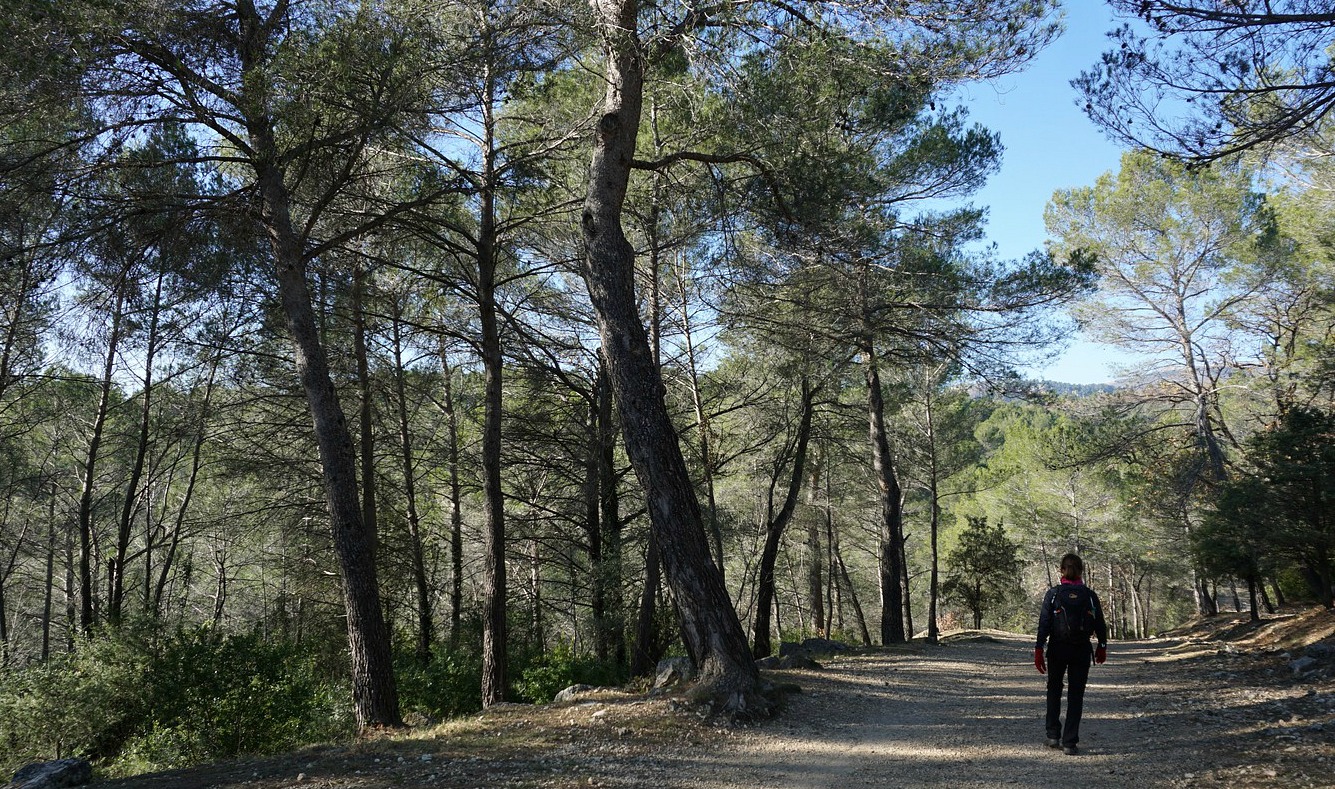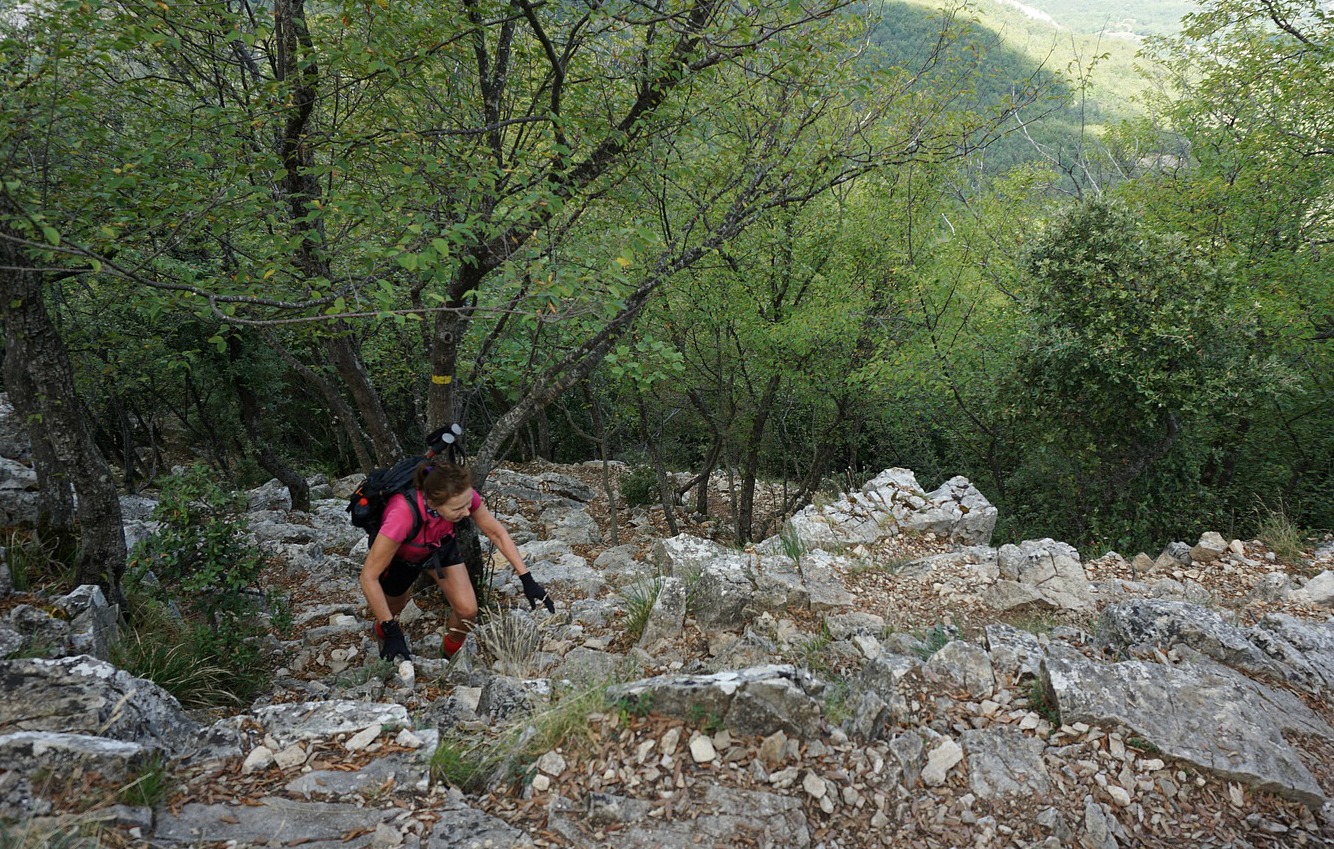

This topping from olive oil, Dijon mustard, soya sauce, black pepper, and fresh ginger will jazz up humble pork chops. In the photo, the chops are served with sweet potato purée and fried mushrooms which go very well with pork.
2 servings
2 nice pork chops
2 tbsp. olive oil
Chopped parsley to decorate
For the topping:
2 tbsp. olive oil
2 tsp. Dijon mustard
1 tsp. soya sauce, pref. salt-reduced
A piece of fresh ginger, about 2 x 1 cm
Freshly ground black pepper
Preheat the oven to 180° C.
Warm 2 tbsp. olive oil in a heavy frying pan over medium high heat. Fry the pork chops until nicely browned on both sides. Place the chops in an oven-proof dish.
Peel the ginger, mince it and place in a small bowl. Mix with olive oil, mustard, soya sauce, and black pepper. Divide this topping on the pork chops and bake the chops in the oven for 20 minutes.
Serve the chops with sweet potato purée and fried mushrooms or rice and some other autumn / winter vegetables such as broccoli or green beans. Decorate with chopped parsley or chives.

There is a good path from Plan des Noves parking (780 m) just before Col de Vence (963 m) to Baou des Blancs (673 m). The trail is marked with red and white GR signs to the first crossroads, then with yellow signs.
The mountains immediately above Vence have good hiking trails for all year-round use. From many spots you have spectacular views down to the coast as well as to the Mercantour summits. On short December days, you appreciate short travel times, i.e. the proximity of the coast.
On this hike, we used trails that actually were familiar from our previous walks (Plan des Noves Hike; There are 2 more Baous on the French Riviera).
From the parking, we first took the GR trail descending a bit, then followed a piste to Mangia Pan.
We continued heading south, and ascended to Cime des Blaquières (809 m), the highest point on this hike. The big oak on the summit can be seen from the coast. From here, we continued towards Baou des Blancs, passing les Blaquières (basically the southern flank of Cime des B.). All signposts by the trail were rather new. To reach Baou des Blancs, our turning point, a short ascent was needed to the viewing point from where Vence was seen right below us.
We took the same trail back. This trail variant had several ascents and descents both ways. Hence, in spite of modest elevation differences, we logged over 400 m vertical climb.
Climb: 448 m
Distance: 11,8 km
Duration: 4 h
Map: Cannes Grasse Côte d’Azur 3643 ET

The following recipe is a carefree way to cook small red mullet fillets. This tasty and very healthy recipe works with any firm small fish fillets. The sauce is first cooked in a heavy casserole, such as Le Creuset, the fish is added and the dish is then baked in the oven.
This method of cooking fish is quite common in the Mediterranean countries. I once had a super monk fish tail in Spain which was cooked this way according to the waiter. The bigger fish pieces just need more time in the oven.
2 servings
250- 300 g small red mullet fillets
3 tbsp. olive oil
1 shallot, chopped
1 clove garlic, minced
2 tomatoes, chopped
50 ml white wine
50 ml good tomato sauce
3 tsp. capers
Freshly ground black pepper
Chopped basil leaves
Preheat the oven to 200° C.
Warm 2 tbsp. olive oil in a heavy casserole over medium heat and sauté the shallot and garlic for about 5 minutes. Add the tomatoes and white wine and continue cooking for 5 minutes more. Stir in the tomato sauce, capers, and black pepper and let simmer for a few minutes.
Roll the small fish fillets and place in the casserole so that they are nicely surrounded by the tomato sauce. Sprinkle with 1 tbsp. olive oil and bake in the oven for 10 minutes until the fish is cooked.
Decorate with chopped basil and serve with some vegetables and new potatoes or rice.

Le Rouret (310 m) is a quiet, well-maintained village on the D2085 road east of Grasse, about 22 km from Nice.
We have often made this agreeable walk when we needed to build up our hiking form after a pause. The hike is signposted as “Le Camp Romain” as there’s an ancient Roman camp ground dating from 800 B.C. on the hilltop.
The walk can be made all-year-round, even in summer, as most of the trail is shaded by trees.
The archaeological site has been cleared of dense vegetation since our last visit, but to be honest there was not much to see -at least for a layman! But the views from the hill were great on this cloudless winter day.
We parked near the mairie of Le Rouret and headed north along Chemin des Pierres de Moulin, crossed Chemin du Castelet (signpost #295 in terrain #131 on the map!). Don’t let the numbers confuse you, the itinerary is clearly marked with yellow signs! We descended a bit along a trail called Chemin du Pont Romain then crossed a stream just before Chemin de Beaume Robert, and forked right. Leaving several houses on our right-hand side, we continued along a trail in the woods. Just before Gorge des Trucs the trail forked sharply left (very well marked), and soon joined the wide dirt track that continued up to the hilltop (479 m). The archaeological site was right behind the telecom mast.
We returned along the dirt track, passing Bois de Rouret and continued along Chemin du Castelet, then forked right at our first crossroads back to the village.
Climb: 240 m
Duration: 2h 10 active
Distance: 7 km
Map: “Cannes-Grasse” Côte d’Azur 3643 ET

Moules marinières is a classic French mussel dish. This time I wanted to serve the mussels on a vegetable bed. Prepare first the vegetable bed and keep warm in a large sauté pan under lid while you cook the mussels marinière style.
2 servings
For the vegetable bed:
1 shallot, chopped
1 clove garlic, minced
2 tbsp. olive oil
2 carrots, sliced
1 medium sweet potato, peeled and chopped
½ fennel, sliced
A handful of spinach leaves
75 ml white wine
½ tsp. dried Provençal herbs
Freshly ground black pepper
Warm the olive oil in a sauté pan over medium heat and start sautéing the shallot and garlic.
Slice the carrots and microwave with a little water for about 4 minutes until soft. Add to the sauté pan. Peel and chop the sweet potato. Microwave with a little water for about 4 minutes until soft and add to the pan. Slice the fennel and microwave with a little water for about 4 minutes, the add to the pan. Add the white wine, Provençal herbs, black pepper, and the spinach. Reduce the heat and cover. The spinach will be wilted while you cook the mussels. When the spinach is wilted reduce the heat to very low just to keep the vegetable warm under lid.
For the mussels:
About 1- 1,4 kg mussels (they often come in 1,4 kg packages prewashed)
1 shallot, chopped
1 clove garlic, minced
1 tbsp. olive oil
75 ml white wine
Freshly ground black pepper
Chopped parsley
In a large heavy casserole, warm the olive oil over medium heat and sauté the shallot and garlic for about 5 minutes.
Pour the mussels in a large bowl with water and check that they are all closed and that the shells are not damaged. Add the white wine and black pepper to the casserole and turn the heat higher. Add the mussels and cover. The mussels take about 4 minutes to be cooked after steam has started to form in the casserole. Stir the mussels a couple of times. Cook until all the shells have opened, the add the parsley.
Divide the vegetable sauté on large, deep plates. Add about half of the mussels on top. Keep the rest of the mussels in the casserole under lid and divide for the second helping.

We have previously blogged about the Bonnard Museum in Le Cannet. This time we followed the marked Bonnard trail which starts in the historic part of Le Cannet, above the museum.
In 1926, Bonnard had purchased a house named Villa Du Bosquet on Avenue Victoria. He was inspired by the nature and the scenery down to Cannes and beyond on his walks in the hills above his residence.
We located signpost #601 (Les Collines; Ancien Canal de la Siagne) by Rue St-Antoine, next to the entrance of a parking house and ascended along Traverse Saint-Antoine (stairs). We crossed Route de Serra Capecu/Avenue Victoria (Signpost #602), and continued a bit along Chemin Romain, then forked right along a path that ran in park surrounded by several upscale residences to signpost #603 where we again forked right. In places, we had good views of Le Cannet, the bay of Cannes and the Esterel Mountains. There were yellow markings all along the itinerary.
We descended back along Chemin des Gypiere to Av. Victoria, forked left where one of Bonnard’s paintings was displayed at a nice viewing point. After 40 m or so we forked right, descending to Rue du Canal, then to Avenue Jean Mermoz which we followed as far as to Boulevard Gambetta/Sadi Carnot. From here, we walked back to the starting point nearby.
As before, we had lunch at the terrace by Rue Saint-Sauveur enjoying the warm October sunshine.
Distance: 3 km
Duration: about 1 h
Climb: 80 m


For some time, we have bought almost all our vegetables and fruit from a local organic shop. The fresh produce is from France, Italy, and Spain and you can choose exactly the amount you need and place it in brown paper bags. This method effectively reduces waste and plastic packages.
Recently, I have discovered some delightful grain products in the shop, such as pre-cooked barley bulgur. This grain makes a nice change from quinoa in various vegetable bowls and salads.
2 servings
120 ml pre-cooked barley bulgur
2 carrots
1 parsnip
2 spring onions
3 tsp. capers
Freshly ground black pepper
8 large scallops
Hazelnut or almond powder
Olive oil
Dressing:
Juice of ½ lemon
4 tbsp. olive oil
Cook the barley bulgur covered in double amount of water over low heat for 15 minutes. Let stand covered for 10 minutes, then transfer into a salad bowl and fluff with a fork.
Finely chop the carrots and parsnip and microwave in a small amount of water until soft. Add to the salad bowl.
Wash and finely slice the spring onions. Add to the bowl. Add the capers and black pepper and mix.
Make the dressing by whisking together the lemon juice and olive oil. Add to the salad mixture.
Preheat the oven to 200°C roast. Place the scallops on an oiled oven-proof dish. Place 1 tsp. hazelnut powder and some olive oil over each scallop. Roast for 4- 5 minutes depending on the size of the scallops.
Divide the bulgur- vegetable mixture into two bowls and place the scallops on top. Decorate with some fresh herb.

We have previously made a hike from Courmes (630 m) to Pic de Courmettes (1248 m) where we then climbed via the summit of Puy de Tourrettes (1268 m) back to Courmes.
This time we explored an interesting new trail back from Pic de Courmettes which circled clockwise around the mountain’s southern flank.
We started along the GR51 trail, heading south. Just before a water reservoir, we left the GR51 which turned sharply left. We continued along a wide track to a clearing at 940 m elev. where we forked left at signpost #189 to the summit. We ascended along the western flank of Pic de Courmettes. The trail became steep in places, requiring some easy scrambling. The trail was now easier to see than on our previous ascent. There were yellow markings but apparently more cairns, too. The first part ran in the woods, then above the tree line. The northern face of the mountain not far from the trail is very steep, to be avoided.
The summit is quite near the coastline as the crow flies, and even on a partly cloudy day the scenery towards Antibes, Cannes etc is remarkable.
We continued along a good trail (still yellow markings) descending south east, then straight south. We passed an oak forest and came to a clearing and ruins (named le Jas de l’Eouvière in some maps) at about 900 m elev. with a livestock fence and gate. A good trail continued behind the gate. It was marked with a small red arrow and a fox. In fact, this was one of the hiking itineraries starting from Domaine des Courmettes, owned by a Christian nature conservation association.
We took this trail which crossed the southern flank of the mountain, between the summit and the Domaine. We ascended a bit (80 m or so), and passed an area of centuries-old oak trees. We then descended to a crossroads (dirt track), forked right to the nearby signpost #189 again, completing the nice loop.
From #189, we used the same trail back to our starting point.
The image below shows our track.
Distance: 11 km
Climb: 700 m
Duration: 4 h active
Map: IGN Cannes Grasse Côte d’Azur 3643 ET

This dish makes a nice lunch when fresh sardine fillets are available. Spaghetti is the pasta type which works best with tomato sauce.
2 servings
8- 10 cleaned sardine fillets
Spaghetti for two servings
2 tbsp. olive oil
1 shallot, chopped
1 clove garlic, minced
100 ml good tomato sauce
2 tsp. raisins
A handful of chopped parsley
2 cherry tomatoes, chopped
Freshly ground black pepper
Preheat the oven to 200° C, roast.
Place the sardine fillets in an oven- proof dish and roast for 10 minutes.
In a saucepan, heat the olive oil over medium heat and sauté the shallot, garlic, and raisins for about 5 minutes. Add the tomato sauce and simmer about 5- 10 minutes while roasting the sardine fillets.
At the same time cook the spaghetti according to the advice on the package, usually for 8- 10 minutes.
Drain the pasta and place it back to the casserole. Add the tomato sauce and parsley to the pasta and mix.
Divide the tomato pasta in the centre of two bowls and place the sardine fillets around the pasta. Decorate with chopped cherry tomatoes and grind over some black pepper.

Cime du Diable (2685 m) is a prominent summit in a chain of mountains in the Mercantour National Park, separating the Gordolasque and Roya valleys.
Legend has it that in ancient times the villagers in the Paillon Valley used to believe that devil lived on Cime du Diable, hence its name. When the taxman had visited the villages, they used to say that devil just descended from the mountain.
But there is nothing devilish in the ascent to Cime du Diable; it is a long ascent, but at least you can arrive at the summit along a path, albeit not signposted. Some parts of the trail are steep and exposed but nevertheless negotiable for a seasoned hiker in good weather.
We started from L’Authion above Col de Turini. Starting at 2000 m or so sounds tempting, but keep in mind that this itinerary to Cime du Diable contains several descents, resulting in much more vertical climb.
We parked by the D68 road (2030 m) (one-way counter clockwise traffic), and walked up to nearby signpost #410 (2080 m), next to Pointe des Trois Communes with a ruined fortification. We descended along the GR52 trail, heading north northwest. The October morning was clear, and our summit was well visible but still quite far away. We came to Baisse de St-Véran at 1836 m, marking the lowest point of this hike.
We ascended to Col de Raus (1999 m), then to Baisse Cavaline. After another short descent, the long ascent started, soon in an Alpine environment where the trail (still GR 52) became steeper and rockier.
We reached Pas du Diable (2450 m), then Lacs du Diable ; signposts #404 and #405. We forked left, leaving the GR trail, and climbed to nearby Pas du Trem (2480 m). The summit was now above us. The unmarked (some cairns) trail zigzagged steeply on the eastern face. After the exposed part, the trail levelled off temporarily before the final climb to the summit. At the summit, there were two cairns and a stick, nothing else. As you can see from the images and the short video clip, we chose the right day!
We decided to descend along an unmarked trail (cairns) on the mountain’s southern flank. The trail continued along the eastern flank of the neighbouring Mont Capelet Supérieur (2637 m) where we had to negotiate big boulders in places (last image above). Getting lower, we eventually reached the grassy slopes above Baisse Cavaline, where we re-joined the GR52, and headed back to our starting point.
We met two lamb flocks, dogs and shepherds during the hike. This time the dogs were well trained, obedient and we had no problems in passing them.
Climb: 1170 m
Distance: 17 km
Duration: 7.5 h active
Map: IGN 3741 OT Vallée de la Vésubie

















































































